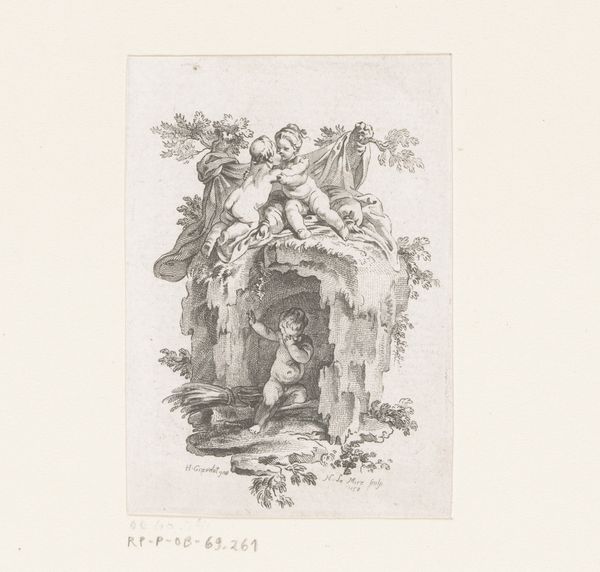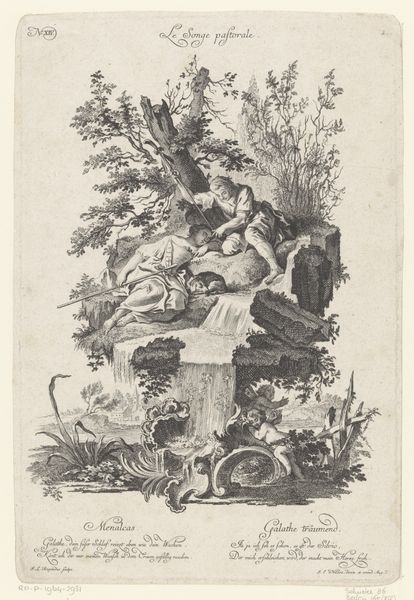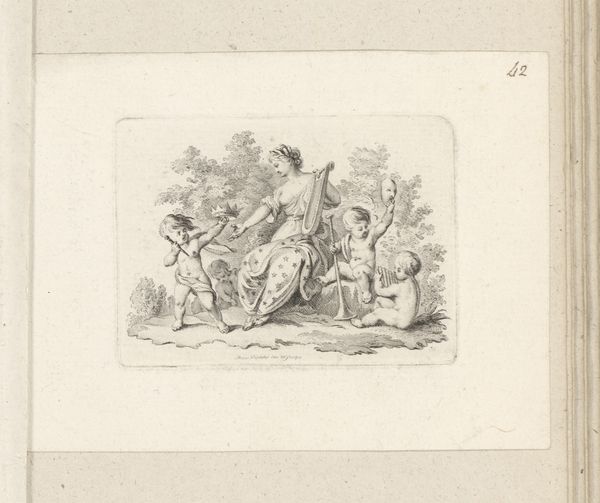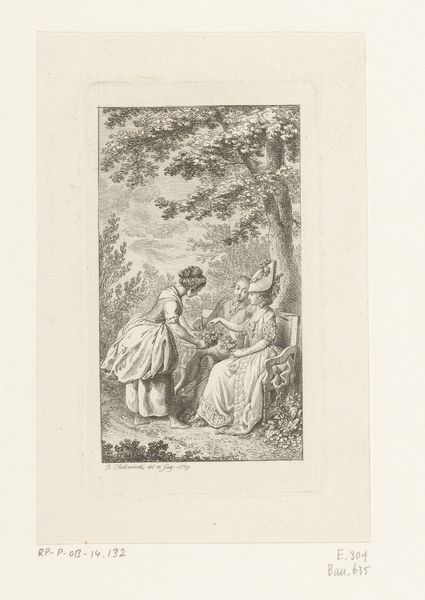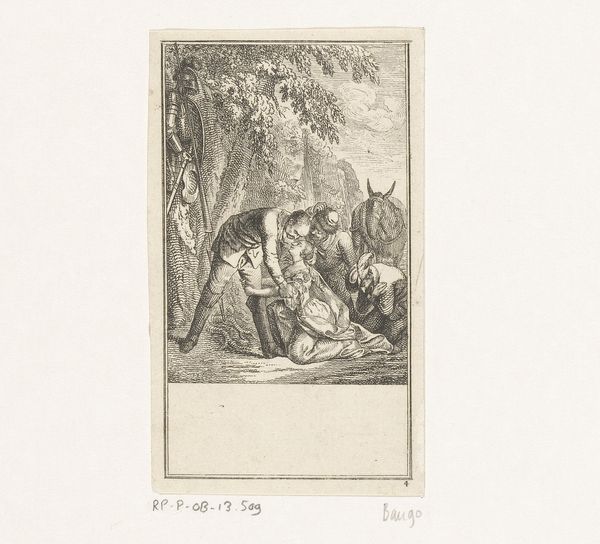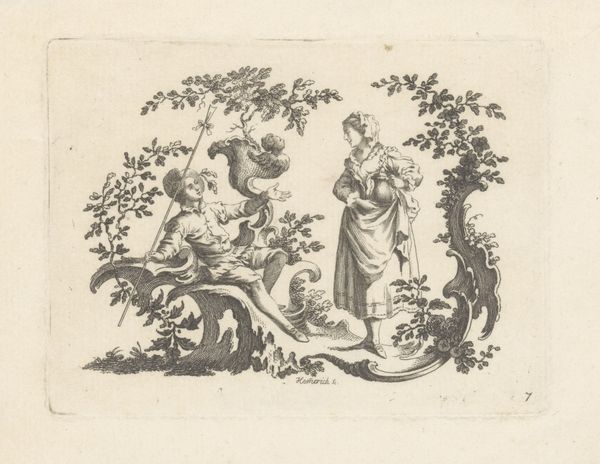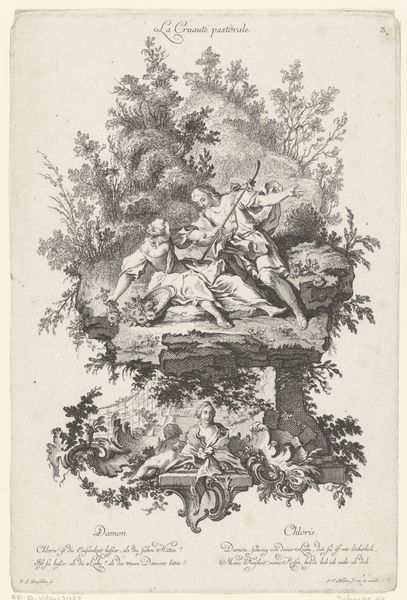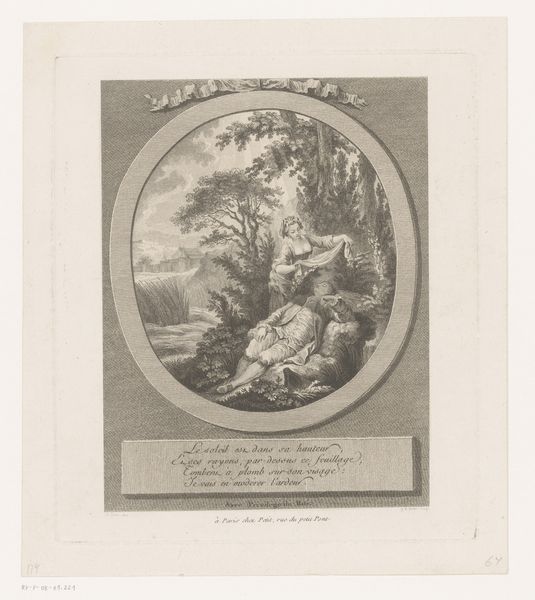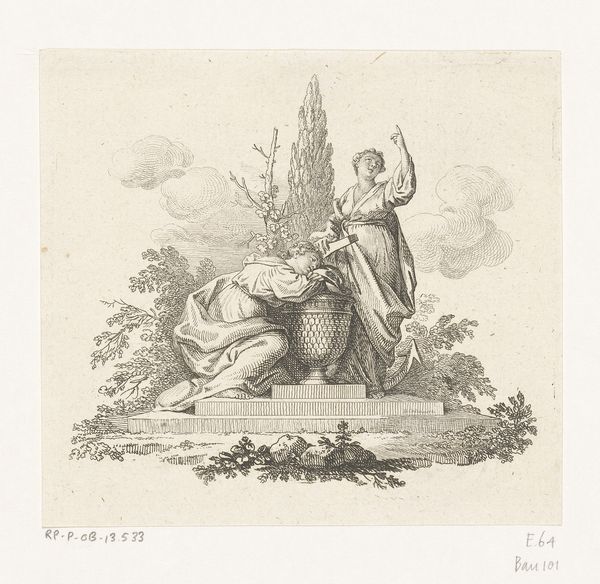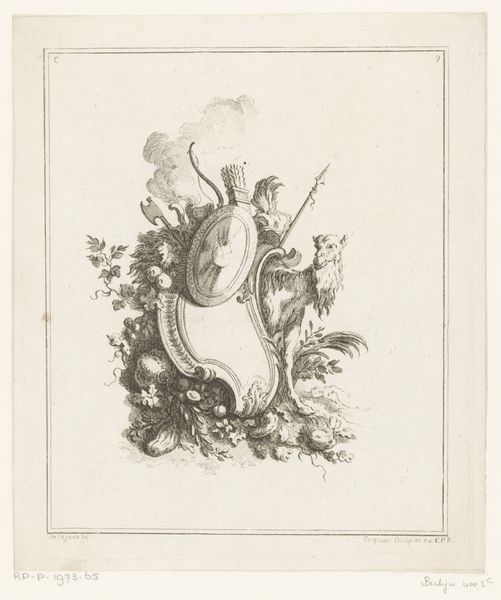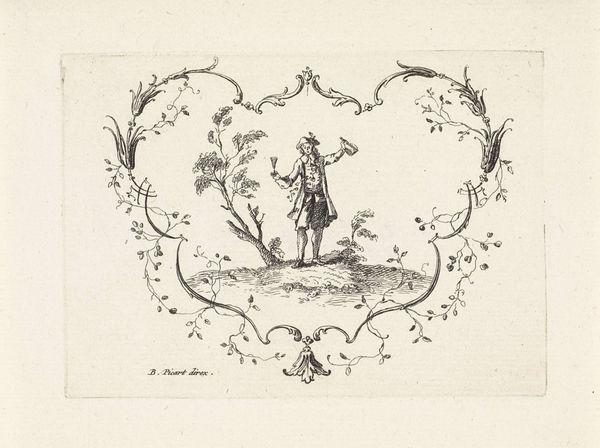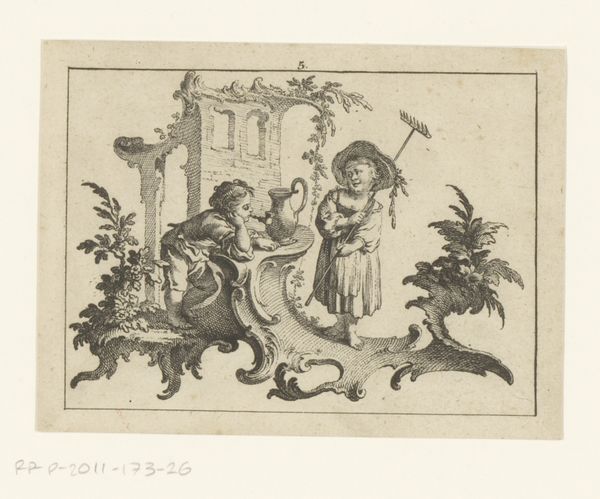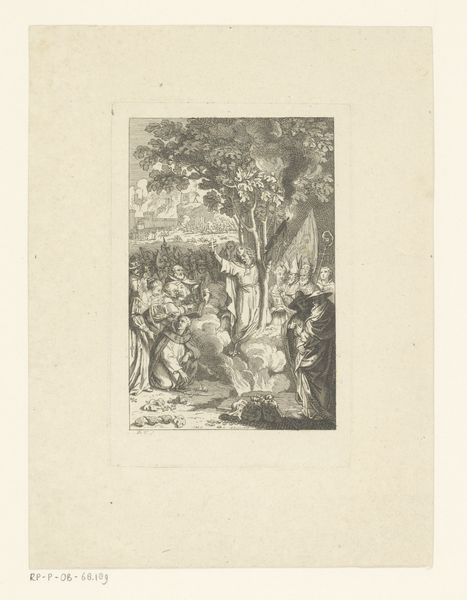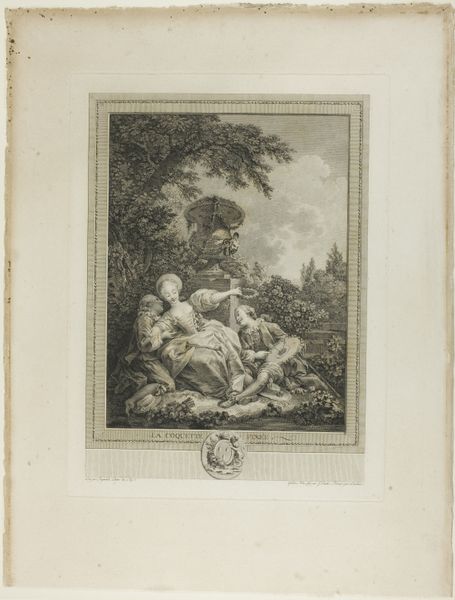
print, etching
#
baroque
# print
#
etching
#
dog
#
landscape
#
figuration
#
genre-painting
Dimensions: height 79 mm, width 63 mm
Copyright: Rijks Museum: Open Domain
Curator: Here we have "Two Putti and a Dog" an etching by Noël Le Mire, created around 1758. Editor: It feels like a quick sketch, almost unfinished, but charming nonetheless. The composition feels playful, with the delicate lines creating a sense of lightness. Curator: This print exemplifies Baroque sensibilities, even this late in the 18th century. Consider the idealized figures, their bodies soft and cherubic. The putti motif carries considerable weight, referencing classical mythology and notions of innocence, desire, and power dynamics within societal constructs. What does their playful interaction with the dog evoke for you? Editor: I'm drawn to the relationship between the figures and the landscape, which gives depth. It raises the question of labor; of production. The landscape, presumably "natural", had to be surveyed and carefully reproduced through an industrial printing press that relies on the extraction of materials and the labor of people to be disseminated at scale. Curator: The interplay between nature and artifice is very true to its historical context, when artifice stood as the peak of taste and creativity. But more so than its environment, the presence of the dog offers another lens to think through class. Dogs are symbols of loyalty and companionship but simultaneously objects that illustrate wealth and control. This tension asks us to consider broader socio-economic hierarchies of the time. Editor: That makes me think more critically about the materials themselves: the etching technique, the type of paper used. How does the mass production affect our experience of what is clearly a very deliberate and skilled technique? I suppose it creates a democratic means to circulate idealized bodies. Curator: Precisely! Its distribution and consumption are key to understanding its impact. And as for the question of labor, while this appears as a charming trifle, it emerged out of a complex ecosystem that privileges aesthetic pleasure through systemic realities. Editor: Right, it's that contradiction—that dance—between pleasure and systemic inequality that make these works enduringly fascinating. Curator: It invites critical awareness, not merely passive appreciation. Editor: I will remember to come back to that whenever I'm observing “genre painting.” Thanks.
Comments
No comments
Be the first to comment and join the conversation on the ultimate creative platform.
